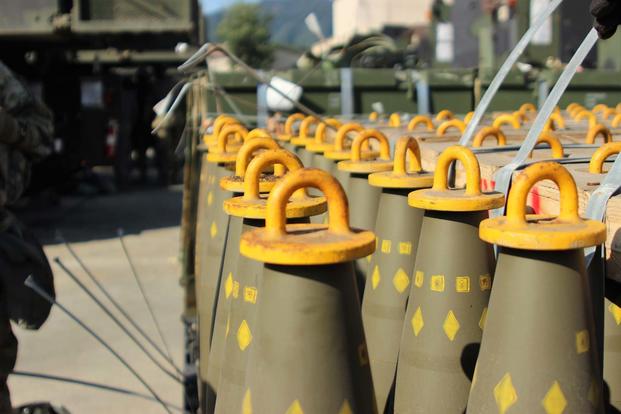U.S. Army ammunition specialists are scrambling to develop quick-fix solutions to a fast-approaching Pentagon deadline that will end the use of cluster munitions and anti-personnel mines.
Defense Department policy mandates that the U.S. military stop using cluster munitions such as the 155mm Dual Purpose Improved Conventional Munition as well as anti-personnel mines often used to deny enemy forces access and freedom of movement on the battlefield by January 2019, Jim Shields, head of Program Executive Office Ammunition, told an audience Tuesday at the National Defense Industrial Association's 2017 Armaments Systems Forum.
The policy is being driven by the "Ottawa accord even though we have not signed it," Shields said, describing the Convention on the Prohibition of the Use, Stockpiling, Production and Transfer of Anti-Personnel Mines and on Their Destruction, typically referred to as the "Ottawa Convention" or "Mine Ban Treaty," according to the Arms Control Association, a non-profit organization in Washington, D.C.
The loss of these munitions creates "capability gaps that we are really concerned about," Shields said.
To replace the loss in capability, Army Vice Chief of Staff Gen. Daniel Allyn has directed PEO Ammo to move forward on existing technologies until a formal program of record can be developed and fielded, Shields said.
As an interim, bridging strategy to the loss of cluster munitions, the Army is buying the Swedish BONUS system, which has "two sensor-fused munitions deployed by a 155mm carrier projectile," he said.
"They scan the ground for armament targets and fire the [explosively formed penetrator] down through the top of the armored vehicle," Shields said.
The Army has tested the system on both the M109 Paladin and M777 155mm artillery systems, he said.
The cannon-delivered munition is "in compliance with DoD Cluster Munition Policy to achieve less than 1 percent of unexploded ordinance," according to Shields' briefing slide.
The service is also looking at the existing XM1128 round, which has a range of 30 kilometers, and monitoring ongoing tests Israel is conducting on its new M999 round.
Currently, it is unclear whether the Trump administration will decide to direct the military to use cluster munitions in the future, Shields said.
"We have initiated de-milling all of our cluster munitions, but we have put a hold on that because we don't know what the current administration's position is with regard to the use of cluster munitions," he said.
The plan is to brief Allyn in November on the progress of the program, Shields said.
As far as the loss of antipersonnel mines goes, the Army is working on the Gator LandMine Replacement Program.
The Gator mine system provides a means to rapidly emplace minefields deep behind enemy lines using high-speed tactical aircraft.
"Obviously, the concern here is you can't indiscriminately attack people who might trip a land mine ... you have to have eyes on or sensors that tell you it's an enemy combatant or a non-combatant," Shields said.
The Army has a formal program of record, but "the technology is not mature enough to deliver capability quickly," he said.
As an interim solution, the service will replace anti-personnel mines in the delivery system with anti-vehicle mines.
"That will get you out of the policy compliance issues and you get essentially close to the same performance that you get [with] the existing Gator ... until the objective system can come along," Shields said.
-- Matthew Cox can be reached at mcox@military.com.





























